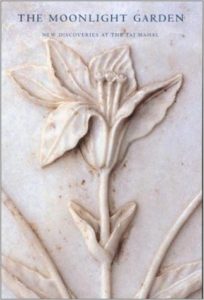
Dicentra cucullaria (Dutchman”s breeches)
Nighttime in the garden is a magical place, with silverly moonlight caressing leaves and flowers as they sway in a light breeze, the flowers’ fragrance meanders then lingers with the music of nocturnal creatures. The transformation made by moonlight on plants and water and the coolness of the night made moon gardens a popular feature in hot climates. Gardeners chose plants that glowed in the moonlight or infused the air with enticing scents, adding water features that mirrored the moon and stirred silver streams and droplets here and there. Moon gardens became popular in the 1920’s and 1930’s in England and the U.S., but they were somewhat forgotten as people spent more time indoors and the great American lawn replaced flower gardens.
I’ve always had a fascination with moon gardens, though, and I recently began to wonder what native plants would be suitable for nighttime interest. Below is a partial list of North American native plants, predominantly of the Northeast, that could enchant both the moon and you with their blooms and scents. These plants also provide a host of ecological benefits to native pollinators, other insects, and wildlife. As always, choosing the right plants for your site can help decrease water use, maintenance, erosion, and the heat island effect, while providing increased beauty.
Spring: Actaea recemosa and A. pachypoda, Dicentra cucullaria and D. eximia ‘Alba’, Houstonia caerulea, Phlox divaricata and P. stolonifera, Tiarella cordifolia, Trillium grandiflorum and T. luteum, Magnolia virginiana and M. macrophylla, Halesia monticola, H. tetraptera, and H. carolina, Cephalanthus occidentalis, Chionanthus virginicus, Cornus florida, Aronia arbutifolia and A. melanocarpa, Kalmia latifolia, Rhododendron groenlandicum.
Summer: Allium cernuum and A. tricoccum, Anemone virginiana, Aruncus dioicus, Baptista alba, Echinacea purpurea alba, Geranium maculata, Gillenia trifoliata, Hydrangea quercifolia, Koeleria macrantha, Liatris spicata alba, Maianthemum racemosum and M. stellatum, Phlox paniculata, Physostegia virginiana, Polygonatum biflorum, Rosa blanda, Lobelia cardinalis “Alba”, Ceanothus americanus, Clethra alnifolia, Itea virginiana, Rhododendron arborescent, Viburnum lantanoides, V. lentago, and V. nudum, and Viola walteri ‘Silver Gem’.
Late summer/autumn: Achillea millefolium, Actaea rubifolium, Ageratina altissima, Agrostis scabra, Amsonia tabernaemontana, Andropogon virginicus, Ascelpias verticillata, Clematis virginiana, Doellingeria umbellale, Eurybia divaricata, Heuchera villosa, Hibiscus moscheutos, Monarda punctata, Muhlenbergia capillaris, Nymphaea odorata, Panicum virgatum, Pycnanthemum tenuifolium and P. virginianum, Sanguisorba canadensis, Symphyotrichum erecoides.
 If you are interested in reading more about moon gardens and the discovery of the gardens that existed at the Taj
If you are interested in reading more about moon gardens and the discovery of the gardens that existed at the Taj
Mahal in the 1600’s, read The Moonlight Garden: New Discoveries at the Taj Mahal, by Elizabeth B. Moynihan. A short history of moon gardens can be found in this post from Don Statham Design in New York.
